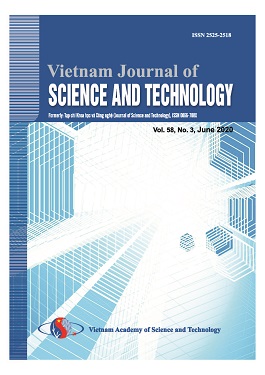Quantitative analysis of Caffeine in the leaves and flowers of Camellia chrysantha by high-performance liquid chromatography with DAD detection
Author affiliations
DOI:
https://doi.org/10.15625/2525-2518/58/3/14366Keywords:
Caffeine, Camellia thrysantha, Golden Camellia, HPLC methodAbstract
Caffeine (1,3,7-trimethylxanthine) is the active alkaloid component which is a naturally occurring substance found in the leaves, seeds or fruits of over 63 plants species worldwide. Although caffeine intoxications are rare, they prove the toxic potential of this common constituent, resulting the tachycardia, atrial arrhythmias, convulsions or even coma. Caffeine toxic effect is increased when taken with other medicines, because it is metabolized through the cytochrome P450 system – primarily by the isoenzyme cYP1A2. This enzyme is also inhibited by antipsychotics and antiarrhythmic drugs, which could become toxic in presence of caffeine. This paper describes the methods for qualitative and quantitative determination of caffeine by HPLC. The results present optimal conditions for the rapid analysis of caffeine with high precision and accuracy which is suitable for its determination in the plant. The obtained results revealed that no caffeine is detected in the leaves and flowers of golden camellia (Camellia thrysantha). Thus, we may suggest that taking of golden camellia leaves and flowers as natural alternative to current decaffeinated tea could be avoid some unwanted side effects that caffeine produced beside the antioxidant content and health benefits of the plant material.Downloads
Downloads
Published
How to Cite
Issue
Section
License

This work is licensed under a Creative Commons Attribution-ShareAlike 4.0 International License.
Vietnam Journal of Sciences and Technology (VJST) is an open access and peer-reviewed journal. All academic publications could be made free to read and downloaded for everyone. In addition, articles are published under term of the Creative Commons Attribution-ShareAlike 4.0 International (CC BY-SA) Licence which permits use, distribution and reproduction in any medium, provided the original work is properly cited & ShareAlike terms followed.
Copyright on any research article published in VJST is retained by the respective author(s), without restrictions. Authors grant VAST Journals System a license to publish the article and identify itself as the original publisher. Upon author(s) by giving permission to VJST either via VJST journal portal or other channel to publish their research work in VJST agrees to all the terms and conditions of https://creativecommons.org/licenses/by-sa/4.0/ License and terms & condition set by VJST.
Authors have the responsibility of to secure all necessary copyright permissions for the use of 3rd-party materials in their manuscript.







 Vietnam Journal of Science and Technology (VJST) is pleased to notice:
Vietnam Journal of Science and Technology (VJST) is pleased to notice: